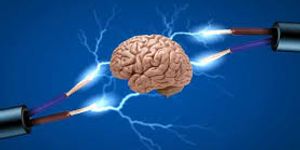Reducing the Potential for Negative Side Effects in CRISPR
About a decade ago, molecular research and genetic engineering were revolutionized with the introduction of the CRISPR gene editing system, which is a kind of molecular scissors that cut the genome at a particular location that is specified by a molecule called a guide RNA. Different guide RNAs can be designed for different genes. The rapid and widespread adoption of the technology, which is described further in the video below, led to the discovery of some drawbacks, including problems with accuracy. Many research groups have been working to refine this technology.
In CRISPR, a genome-cutting enzyme called an endonuclease is targeted to a certain spot in the genome by the guide RNA. Often, the endonuclease that's employed is one called Cas9. There are others, though. One alternative is Cas12a, which was used in a new report published in Cell by scientists at the Novo Nordisk Foundation Center for Protein Research. They have characterized how Cas12a works on the molecular level. Now it will be possible to make it highly specific and limit the number of unintended and undesirable off-target impacts.
“If we compare CRISPR to a car engine, what we have done is make a complete 3D map of the engine and thus gained an understanding of how it works. This knowledge will enable us to fine-tune the CRISPR engine and make it work in various ways - as a Formula 1 racer as well as an off-road truck,” said Professor Guillermo Montoya from the Novo Nordisk Foundation Center for Protein Research.
In this study, the scientists used cryo-electron microscopy to analyze how Cas12a does its job. The team was able to image the molecule in different conformations as it cut strands of DNA. The team added another technique called single-molecule FRET to their study. It allowed them to observe how the molecules moved, and the sequence of steps each protein made. The researchers found that three parts of the CRISPR tool have to shift shape so to properly cut the DNA.
“Our new study shows the precise series of events in the genome leading to gene editing. These three "pieces" that change, work like airport security checks. You have to complete all checks and in the right order to proceed,” explained Associate Professor Nikos Hatzakis of the Department of Chemistry and the Nano-Science Center.
This work may help explain why CRISPR often has unintended effects on the genome, suggested the researchers. After the strand of DNA gets cut, the three so-called security checks stay open. That causes the whole process to take longer than desired; the cellular machinery keeps going and can generate additional edits.
The researchers are hopeful that the data revealed in this research will stop these unwanted effects and can make gene editing more accurate immediately. You can check out a video from the University of Copenhagen that describes the research here.
Sources: AAAS/Eurekalert! via University of Copenhagen, Cell









